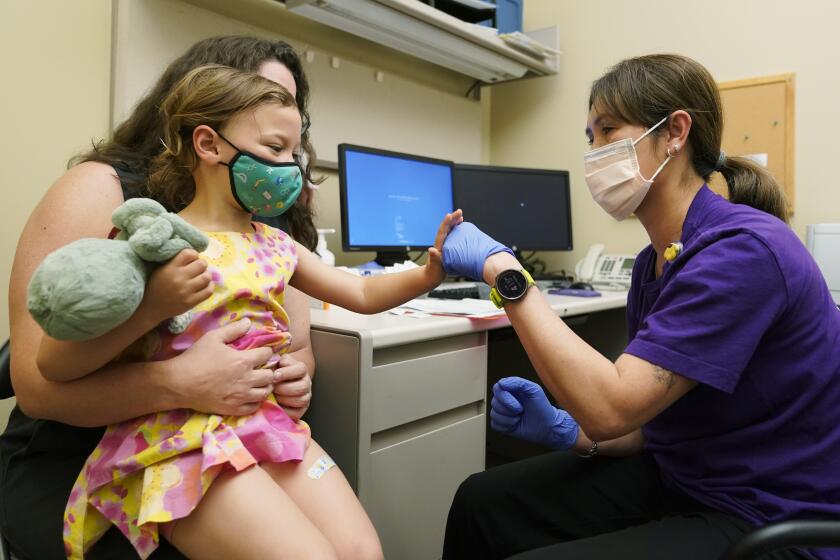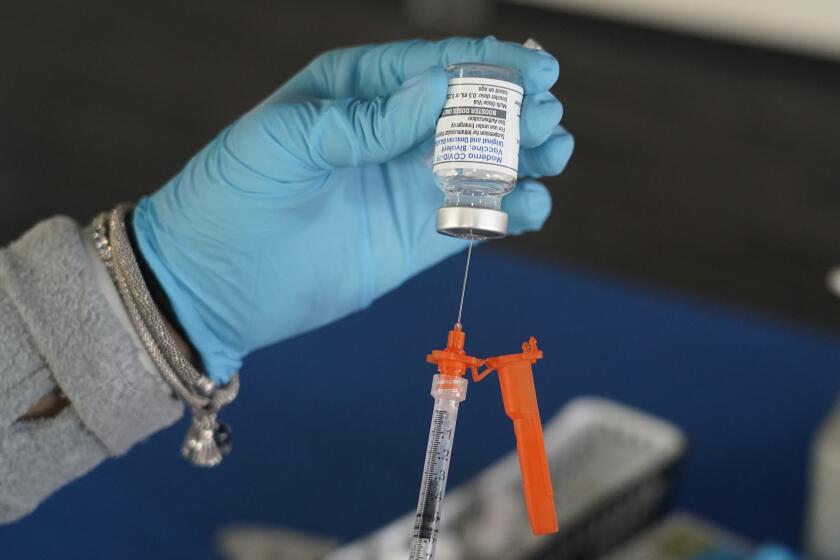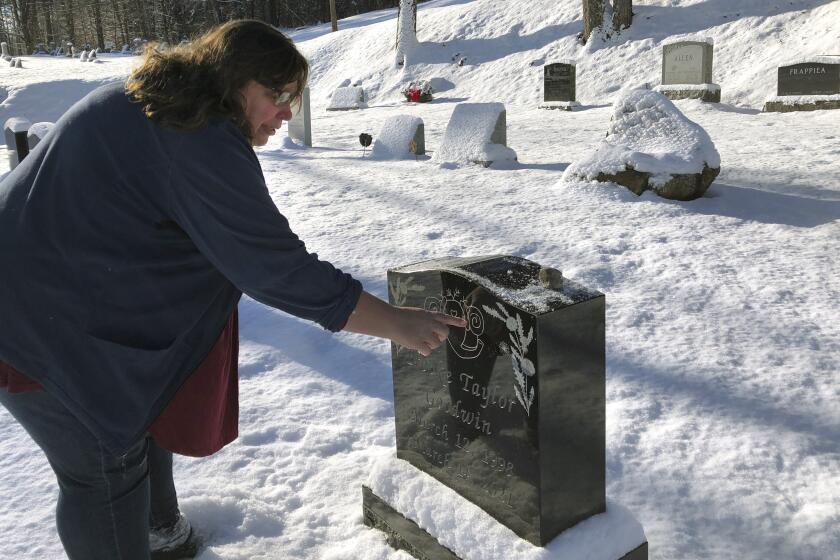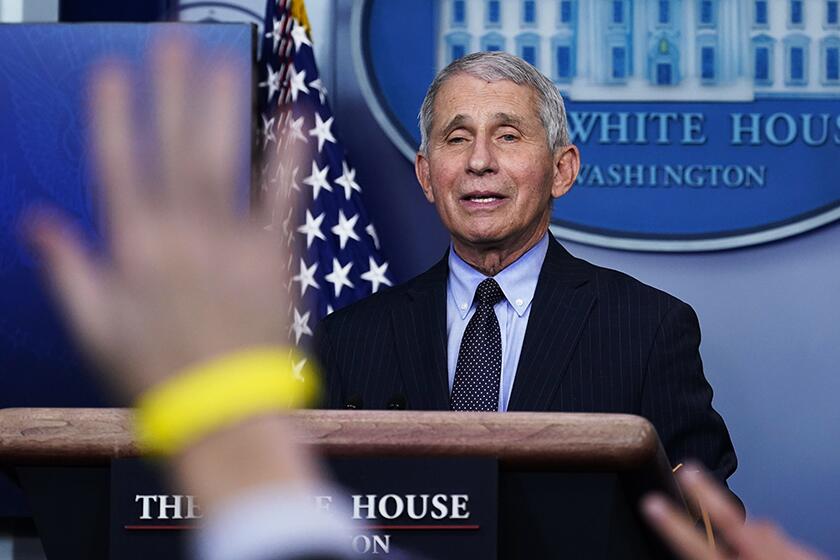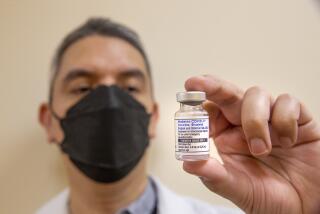Omicron boosters for the youngest children are here. Will they make a difference?
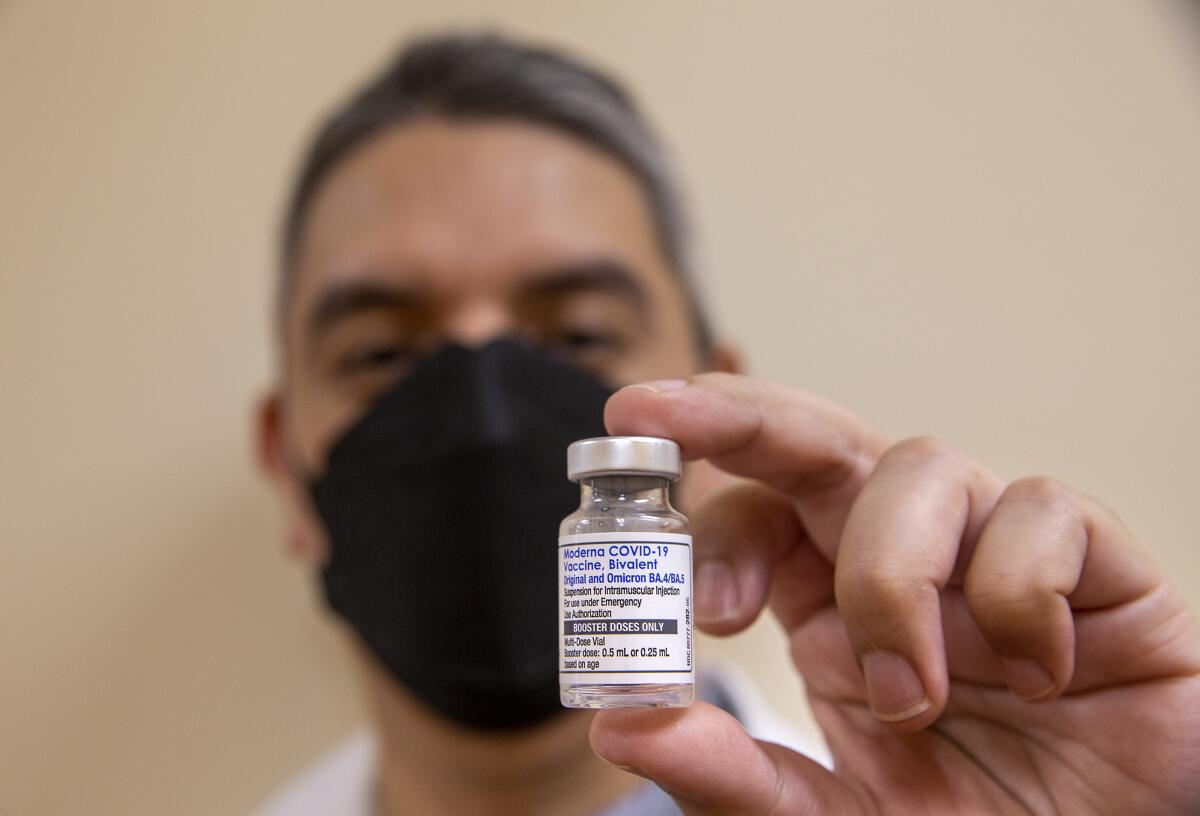
- Share via
Updated COVID-19 booster shots are now available for the youngest children in California, a welcome development for officials hoping to augment vaccine coverage and head off a viral resurgence this winter.
Availability and uptake, however, are two different things. And given the meager vaccination rate among youngsters under 5, as well as modest overall demand for the new bivalent doses, it remains to be seen whether this latest expansion of eligibility will significantly increase the number of shots given.
A constraint at the outset is that most children in this age range have yet to be vaccinated for COVID-19 at all.
“We’re always concerned with lower vaccination rates among children,” said Los Angeles County Public Health Director Barbara Ferrer, “in particular because, as we’ve seen, some children will still get severe illness.”
U.S. regulators have cleared pediatric doses of the updated COVID-19 vaccines to children ages 6 months to 5 years.
U.S. regulators this month cleared the way for children ages 6 months through 5 years to receive the updated bivalent COVID-19 vaccines, which are formulated to protect against both the ancestral coronavirus strain and the Omicron subvariants that have dominated much of this year.
“The most important thing for us is it reduces the serious outcomes like hospitalization and death but potentially can also even help reduce symptomatic disease,” Dr. Peter Marks, the U.S. Food and Drug Administration’s vaccine chief, said during a discussion hosted last week by the COVID-19 Vaccine Education and Equity Project.
Given that, “I think it’s a good idea if your child has received the primary series to consider getting them boosted,” Marks said. And if not, “it’s a great idea to consider getting your child vaccinated to start the primary series because we’re still on the uptick of another winter wave of COVID-19.”
Children 6 months to 5 years of age who received the Moderna COVID-19 vaccine are eligible for the updated Moderna bivalent booster two months after completing their primary vaccination series.
For children ages 6 months to 4 years who started but have yet to complete their three-dose Pfizer-BioNTech primary vaccination series, the final dose will be the updated bivalent booster shot. Children in this age range who have completed their three-dose series with the older shot are not eligible for the bivalent booster at this time.
Weekly COVID-19 deaths in Los Angeles County are the highest since late March, when the county was emerging from the initial winter Omicron wave.
Residents can book vaccine appointments using the state’s online platform, MyTurn.ca.gov, or by calling (833) 422-4255. For children who are immunocompromised, officials recommend parents consult with their healthcare provider.
Those living in Los Angeles County can visit VaccinateLACounty.com for more resources or to find a nearby vaccination site.
So far, only 7% of California children under 5 have completed their initial primary vaccine series, by far the lowest of any age group, state data show. That means about 2 million youngsters are currently ineligible for the bivalent booster.
In a statement to The Times on Thursday, the California Department of Public Health acknowledged the low uptake among the youngest children but said “this is to be expected because vaccines were not available for this group until much later.”
Although the very first COVID-19 vaccines were doled out in limited fashion starting in December 2020, the shots did not become available for the youngest children until June of this year.
“We are hopeful that the demand will continue to increase as more Californians learn about this newer eligibility,” the statement continued. “Both the original COVID-19 vaccines and bivalent doses have gone through rigorous scientific review to confirm their safety and efficacy in all age groups.”
With coronavirus cases and hospitalizations rising in Los Angeles County, officials are voicing new confidence in the effectiveness of the updated COVID-19 booster shot.
Timing, however, may not be the only factor at work. In a recent Kaiser Family Foundation survey, 45% of parents of children ages 6 months to 4 years said they would “definitely not” get their children vaccinated, while 20% said they would do so only if required.
Among the reasons respondents offered were concerns that the shots were too new and had not been adequately tested or researched, as well as worries about possible side effects and overall safety. Some parents also said they didn’t think the vaccines were necessary or that they weren’t worried about COVID-19.
“We have seen that these vaccines are very safe and very effective,” Ferrer said Thursday. “I think it’s our job as public health practitioners to continue to engage in conversations with people in the community and make sure that they have good information so that they can make the best decision for themselves and their children and their community.”
But uneasiness and unwillingness persist even as officials and experts emphasize that vaccines remain one of the best ways to help avoid catching and falling seriously ill with COVID-19.
U.S. life expectancy, already declining since the onset of the pandemic, fell further in 2021, according to the CDC’s final accounting of death certificates.
And given a still-elevated level of coronavirus transmission as well as the imminent arrival of the holiday season, officials have said getting boosted now can have a powerful effect.
“Vaccines are among the very safe medical interventions that really provide an incredible amount more benefit than many other of our medical interventions,” Marks said.
The California Department of Public Health “continues to work diligently to provide information about the availability, efficacy and safety of the COVID-19 vaccines and boosters,” according to its statement. “Recent data show that a bivalent dose provides significant additional protection against severe COVID-19 infection and can help guard against the worst outcomes of COVID-19, including hospitalization and death.”
Dr. Anthony Fauci talks with us about his career, shares his tips to remain healthy during the tripledemic and reveals his favorite Jesuit saint
Along with COVID-19, officials are urging residents to get vaccinated for the flu, which is striking the nation with a vengeance not seen in years. The concurrent circulation of those and other viruses — including respiratory syncytial virus, or RSV — has burdened healthcare systems throughout the country and state.
L.A. County recently reported that the number of hospital beds available countywide had fallen to its lowest level of the pandemic.
“While hospitals in L.A. County currently retain full capacity to care for all those in need — and we encourage everyone to seek care if they experience any severe symptoms of illness, including difficulty breathing, severe chest pain, disorientation or trouble staying awake — it is important to acknowledge how easily the hospitals can become stressed,” Ferrer said.
Pediatric bed availability has improved somewhat this month, but also remains at among the lowest levels in the last four years.
“Young children can be susceptible to severe illness from respiratory viruses, including RSV and flu. And when levels are as high as they are now, pediatric hospital bed availability can drop rapidly,” Ferrer said. “So everyone’s encouraged to take steps to curb transmission of respiratory viruses, including masking in indoor public spaces and staying home when you’re sick.”
Times staff writer Rong-Gong Lin II contributed to this report.
More to Read
Sign up for Essential California
The most important California stories and recommendations in your inbox every morning.
You may occasionally receive promotional content from the Los Angeles Times.
